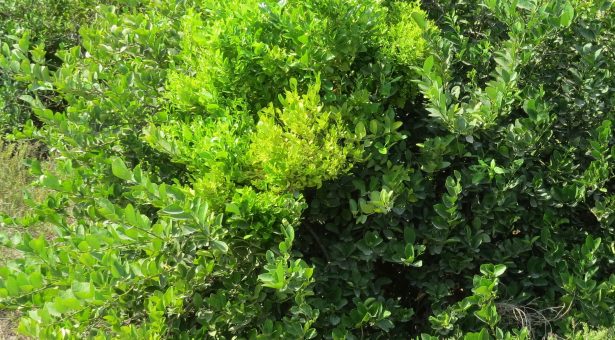Zombie plants, witches’ brooms and the cauldron of curious science

Carrots, ants, snails, strawberries, mice, and major cereal crops are just a few of the many organisms that can be turned into zombies: kept alive on life support under the manipulating spell of parasites.
This is not a Halloween horror tale; it is a fascinating area of research that is bubbling away at the John Innes Centre.
Delving into the mechanisms behind host manipulating parasites may offer new clues to protecting disease-threatened food crops in using biological control methods rather than chemicals which damage the environment.
Until recently there was little understanding of what guides these bizarre relations on a molecular and mechanistic level. Research from the Hogenhout group at the John Innes Centre and collaborators has identified a manipulation molecule produced by phytoplasma bacteria to hijack plant development.
When inside a plant this protein causes key growth regulators to be broken down, triggering abnormal growth. Phytoplasma bacteria are often responsible for the witches’ brooms seen in trees where an excessive number of branches grow close together. These bushy outgrowths are the result of the plant being stuck in a vegetative “zombie” state, unable to reproduce and providing a longer-lasting environment for the parasite within.
Plant parasites such as phytoplasma bacteria, and also other bacteria and plant viruses, are spread by insect vectors such as aphids, plant lice and leafhoppers.
These insects feed on the vascular tissue of plants and may be referred to as the ‘mosquitoes of the plant world’, because they transmit a wide range of plant parasites.
The research conducted by the Hogenhout group focuses on the interactions among plants, pathogens and insects and has generated unique insights into the fascinating world of plant defence and immunity.
Professor Saskia Hogenhout, explains: “Our work on the phytoplasma has revealed how a parasite modulates plant defences and turn plants into better hosts for insect vectors. This information can be turned around and used to better understand what plants need to become more resilient to insect attack.
“Understanding these interactions is especially important because pesticides are being taken off the market for environmental reasons and there are not a lot of control methods to protect against the insects. It’s important that we understand the plant defence and immune system so that we can engineer durable resistance of crops to phytoplasmas and their insect vectors.”
Phytoplasmas affect food production worldwide. They cause devastating crop diseases, such as Aster Yellows that often badly affect vegetable crops such as lettuce and carrots, and also oilseed rape, and the grain crop wheat.
The wine industry in France, Italy, and Croatia regularly experiences losses, because it is challenging to reduce phytoplasma outbreaks in grape vines without using chemical pesticides to control the phytoplasma insect vectors.
There is much to be gained from finding innovative biological solutions to replace chemical pesticides, which require carbon-intensive resources for their production and are damaging to biodiversity.
Human health may also benefit from our improved knowledge of the mechanisms by which parasites manipulate hosts.
The phytoplasmas that the Hogenhout group are studying are related to the human and animal mycoplasma pathogens, which may use similar mechanisms to modulate cells.
Professor Hogenhout said: “Parasites are often excellent puppeteers, as they excel at manipulating their hosts to become more attractive to other organisms the parasite needs to spread. However, how the parasites do this is largely unknown. As such, our work on the phytoplasma parasites is relevant to other parasites, such as the insect-vectored malaria and virus parasites that jeopardise human and animal health.”
The research on phytoplasmas presents spectacular examples of how single genes can turn parasites into excellent puppeteers of other organisms and take control of the surrounding environments: this cauldron of curious science may contain a cure for major diseases of plants and humans.



